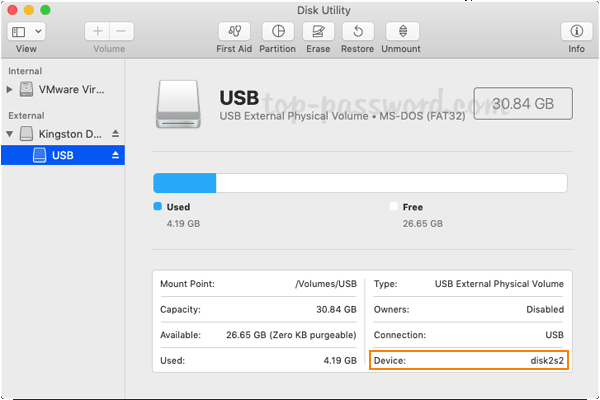By a given MAC address, retrieve OUI vendor information, detect virtual machines, possible applications, read the information encoded in the MAC, and get our research's results regarding the MAC address or the OUI. Select the PC or Mac tabs above to help you with the rest of the install process. If the Microsoft account or work or school account isn't working, see I forgot the username or password for the account I use with Office.
To use any of these key combinations, press and hold the keys immediately after pressing the power button to turn on your Mac, or after your Mac begins to restart. Keep holding until the described behavior occurs.
- Command (⌘)-R: Start up from the built-in macOS Recovery system. Or use Option-Command-R or Shift-Option-Command-R to start up from macOS Recovery over the Internet. macOS Recovery installs different versions of macOS, depending on the key combination you use while starting up. If your Mac is using a firmware password, you're prompted to enter the password.
- Option (⌥) or Alt: Start up to Startup Manager, which allows you to choose other available startup disks or volumes. If your Mac is using a firmware password, you're prompted to enter the password.
- Option-Command-P-R:Reset NVRAM or PRAM. If your Mac is using a firmware password, it ignores this key combination or starts up from macOS Recovery.
- Shift (⇧): Start up in safe mode. Disabled when using a firmware password.
- D: Start up to the Apple Diagnostics utility. Or use Option-Dto start up to this utility over the Internet. Disabled when using a firmware password.
- N: Start up from a NetBoot server, if your Mac supports network startup volumes. To use the default boot image on the server, hold down Option-N instead. Disabled when using a firmware password.
- Command-S: Start up in single-user mode. Disabled in macOS Mojave or later, or when using a firmware password.
- T: Start up in target disk mode. Disabled when using a firmware password.
- Command-V: Start up in verbose mode. Disabled when using a firmware password.
- Eject (⏏) or F12 or mouse button or trackpad button: Eject removable media, such as an optical disc. Disabled when using a firmware password.
If a key combination doesn't work
If a key combination doesn't work at startup, one of these these solutions might help:
- Be sure to press and hold all keys in the combination together, not one at a time.
- Shut down your Mac. Then press the power button to turn on your Mac. Then press and hold the keys as your Mac starts up.
- Wait a few seconds before pressing the keys, to give your Mac more time to recognize the keyboard as it starts up. Some keyboards have a light that flashes briefly at startup, indicating that the keyboard is recognized and ready for use.
- If you're using a wireless keyboard, plug it into your Mac, if possible. Or use your built-in keyboard or a wired keyboard. If you're using a keyboard made for a PC, such as a keyboard with a Windows logo, try a keyboard made for Mac.
- If you're using Boot Camp to start up from Microsoft Windows, set Startup Disk preferences to start up from macOS instead. Then shut down or restart and try again.
Remember that some key combinations are disabled when your Mac is using a firmware password.

Learn more

Cd Device For Mac Os
- Learn what to do if your Mac doesn't turn on.
- Learn about Mac keyboard shortcuts that you can use after your Mac has started up.
// Features
Cd Device For Mac Windows 10
Data
Our list of vendors is provided directly from the IEEE Standards Association and is updated multiple times each day. The IEEE is the registration authority and provides us data on over 16,500 registered vendors.
Speed
Our API was designed from the ground up with performance in mind. We have stripped our API down to the bare essentials, optimized our servers, and organized our data so that whether your app is making 100 requests a day, or 100,000, you'll never be left waiting.
Simple
We have eliminated all unnecessary overhead from our systems. Simply send us an HTTP GET/POST request with your MAC address and we'll return the vendor. No registration or api key necessary for up to 1,000 requests per day.
Reliable
We want you to feel comfortable building your systems around ours. Since launching in 2011, we have grown at an incredible pace. Today our API receives over 3.6 billion requests per year!
